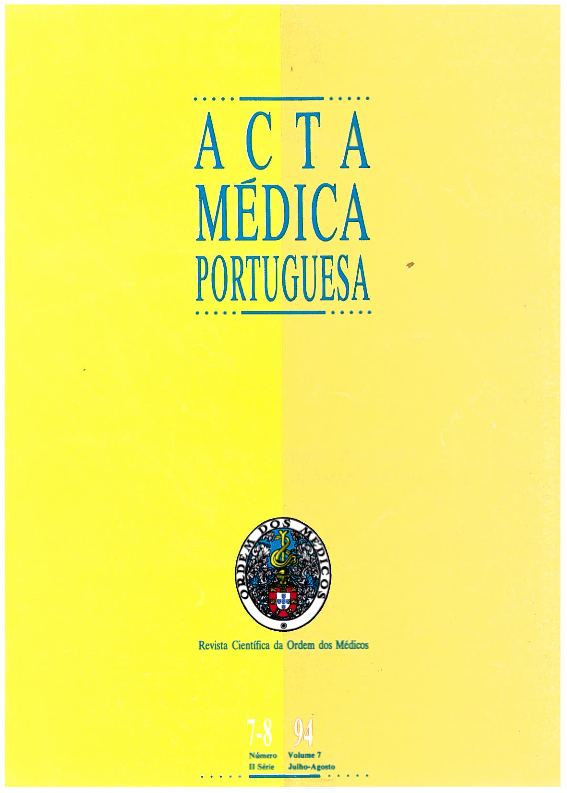Carotid-cavernous fistulae. The diagnostic and therapeutic prospects.
DOI:
https://doi.org/10.20344/amp.2940Abstract
Even though in clinical practice carotid cavernous fistulas (CCF) are not a frequent pathology, it should be a diagnostic hypothesis in face of a suggestive clinical presentation. We intended to review the diagnosis and the therapeutics, comparing them with the actual perspectives. Files of 25 patients with the diagnostic hypothesis of CCF, confirmed by conventional angiography in the HSAC Neuroradiology Department, were reviewed. In this group of patients, (5 males and 20 females), the fistulous aetiology was spontaneous in 10 and traumatic in 15. Clinically the symptom most often presented was diplopia (23 cases) and the most frequent encountered sign was ophthalmoplegia (20 cases). Of the Neuroradiologic investigation, CT scan (done to all patients) have shown an prominent superior ophthalmic vein as the most frequent abnormality. Angiographic study was based on Lasjaunias et al protocol (Surgical Neuroangiography, Vol. 2, Springer-Verlag). Surgery was the therapeutic approach for the traumatic fistulas; only 2 of the spontaneous were treated by endovascular route. Three patients are still under observation. In all the others cases there was a fistula exclusion.Downloads
Downloads
How to Cite
Issue
Section
License
All the articles published in the AMP are open access and comply with the requirements of funding agencies or academic institutions. The AMP is governed by the terms of the Creative Commons ‘Attribution – Non-Commercial Use - (CC-BY-NC)’ license, regarding the use by third parties.
It is the author’s responsibility to obtain approval for the reproduction of figures, tables, etc. from other publications.
Upon acceptance of an article for publication, the authors will be asked to complete the ICMJE “Copyright Liability and Copyright Sharing Statement “(http://www.actamedicaportuguesa.com/info/AMP-NormasPublicacao.pdf) and the “Declaration of Potential Conflicts of Interest” (http:// www.icmje.org/conflicts-of-interest). An e-mail will be sent to the corresponding author to acknowledge receipt of the manuscript.
After publication, the authors are authorised to make their articles available in repositories of their institutions of origin, as long as they always mention where they were published and according to the Creative Commons license.









